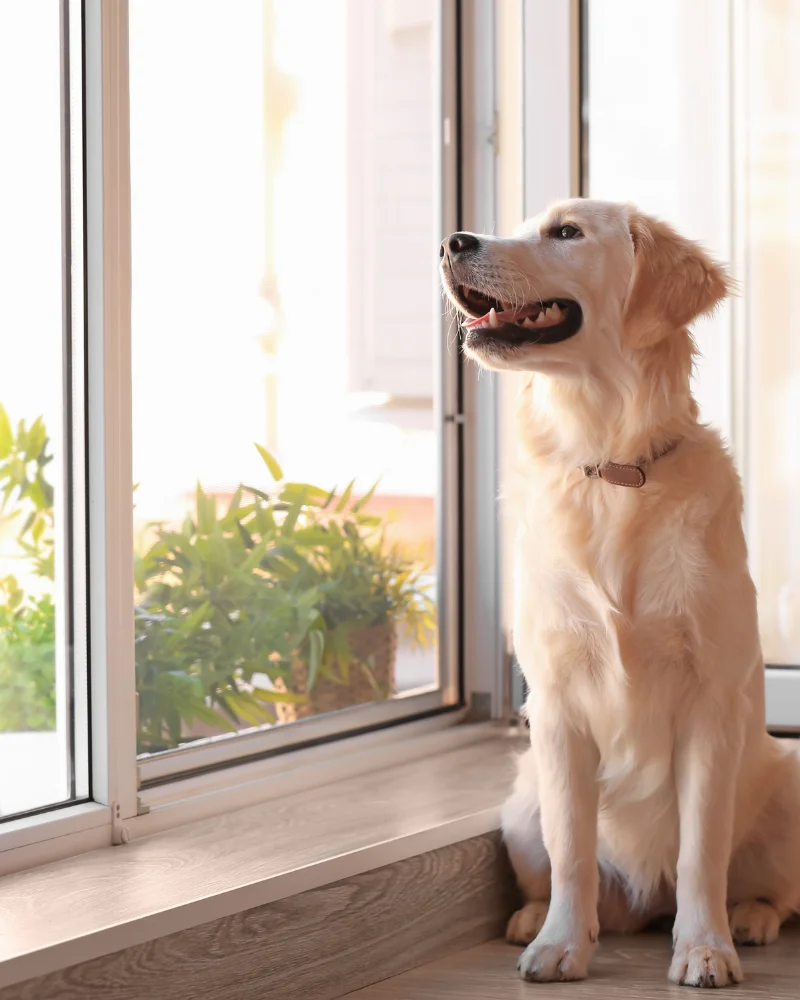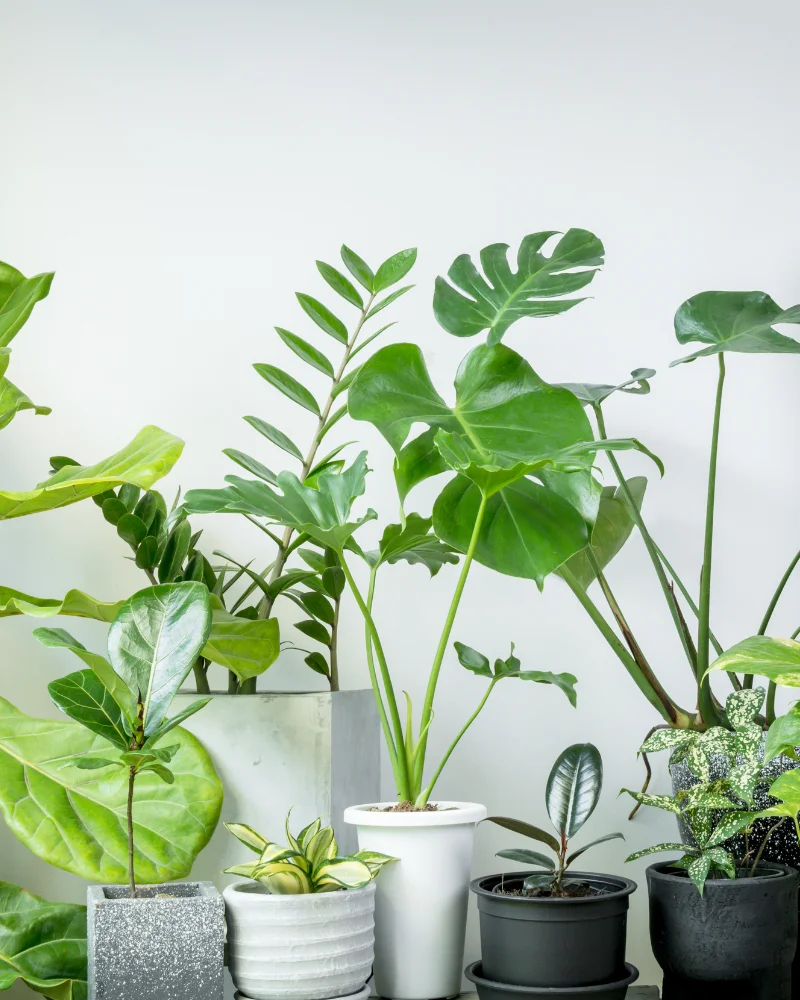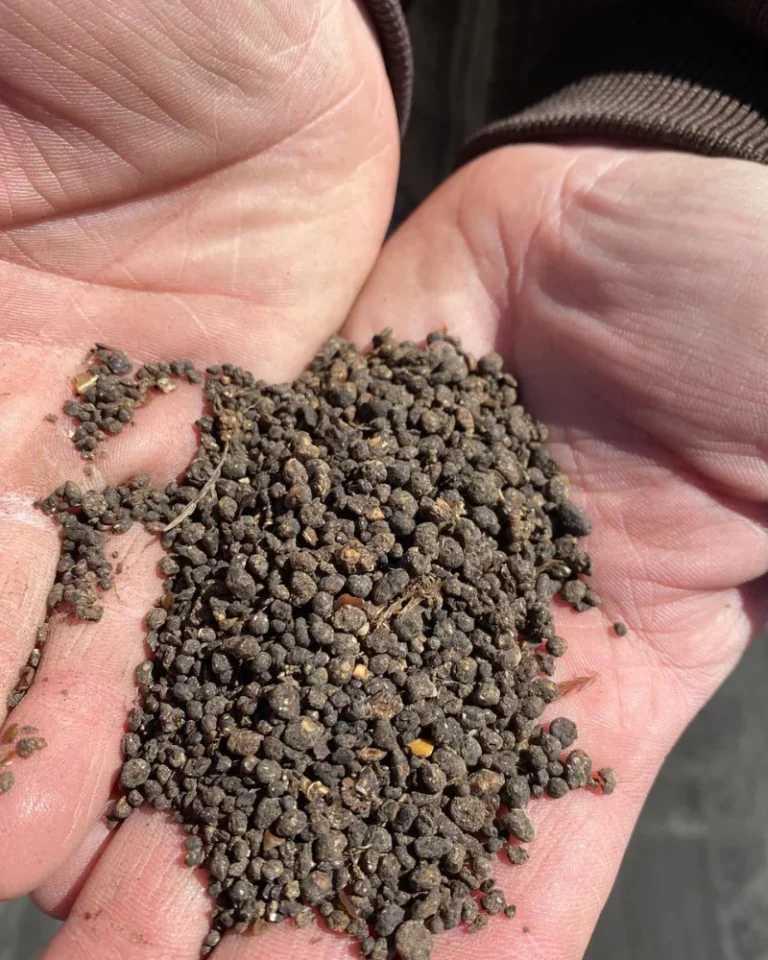This post may contain affiliate links. By browsing this website, you agree to our disclaimer, privacy policy, and terms of use.
Looking for effective natural air purification methods to clean the air in your home? We’ve got a whole list of 100% natural ways you can keep the air in your home fresh and clean.
Read on for easy and approachable ways to improve the indoor air quality of your home. From houseplants to natural ways to reduce pet dander in your home.
Do you suffer from allergies, asthma, or other respiratory issues that seem to worsen when you’re indoors? You might be surprised to learn the air we breathe in our homes can be far from pristine. That’s where natural air purification methods come in!
Our homes can harbor a surprising amount of pollutants. From dust mites and pet dander to mold spores, pollen, and even dangerous VOCs (Volatile Organic Compounds) emitted from household products.
By now you might be wondering how to detox the air in your home. But before you rush out to buy expensive air purifiers or chemical-laden sprays, you’ll want to read this first.
In this article, our THC experts dive deep into the science behind indoor air pollution and explore a variety of tried-and-true methods for naturally eliminating common culprits contaminating your air.
We’ll cover everything from the best air-purifying plants to the wonders of activated charcoal, and even throw in some DIY solutions that you can whip up with ingredients from your own kitchen!
Get ready to take a deep breath and discover the secrets to creating cleaner, fresher air in your home. Trust us. Your lungs will thank you!
Top 10 Natural Air Purification Methods
1. Increasing Ventilation

When your home’s air isn’t circulating properly, it’s a breeding ground for indoor pollutants. These indoor irritants can come from all sorts of sources, like building materials, cleaning products, cooking, smoking, and even our pets.
But fear not, because proper ventilation is one of the easiest and most effective ways to improve your air quality at home! Think of it as a natural air exchange system that brings in fresh outdoor air while kicking out the stale, polluted indoor air.
By reducing the number of pollutants, you minimize their potential health impacts. It’s like hitting the refresh button on your home’s air!
Here are some easy ways you can improve the ventilation in your home:
- Open those windows and doors! It’s the simplest and most cost-effective way to improve ventilation. Create a cross-breeze by opening windows on opposite sides of your home, and aim for short bursts of intense ventilation throughout the day, especially when cooking or cleaning.
Cooler mornings or evenings are ideal for opening windows for extended periods.
- Exhaust fans are your friends. Use them in your kitchen and bathrooms to remove moisture, cooking odors, and pollutants. Keep them running for a few minutes after you’re done, and consider leaving them on low speed for continuous air circulation.
- Ceiling fans to the rescue! While they don’t bring in fresh air directly, ceiling fans are great at circulating existing air more effectively, helping to distribute fresh air and dilute pollutants.
Consistency is key! Try to make these ventilation strategies a part of your daily routine if the weather permits. You’ll be on your way to a healthier, cleaner air in no time.
2. Dust Removal
Let’s talk about one of the most overlooked yet important aspects of maintaining a healthy home: dust removal. We know dusting might not be the most exciting topic, but trust us, it’s essential for reducing indoor air pollution.
First things first. Dust isn’t just harmless dirt. It’s a sneaky mixture of dead skin flakes, hair fibers, fabric fragments, soil particles, and even insect parts. Pretty gross, right? These tiny particles can wreak havoc on your respiratory system and make allergies flare up out of nowhere.
But wait, that’s not it! Dust is also home to dust mites, tiny bugs that love to hang out in your carpets, bedding, and furniture. And if you have pets you also need to consider pet dander that makes up a significant portion of dust around our houses. It’s a major allergen that can cause some serious sneezing fits.
Luckily, dusting is about the easiest chore that can be done around the house. Here are some tips to make sure you are dusting effectively:
How To Purify Air In Home From Dust
- Microfiber cloths are your new best friend. Say goodbye to feather dusters and old rags that just push dust around. Microfiber cloths trap dust with static electricity, so it can’t escape. Plus, they’re machine-washable and reusable, so you can feel good about being eco-friendly.
- Keep It Damp. For a more thorough clean, slightly dampen your microfiber cloths. This helps trap dust particles more effectively and keeps them from floating back into the air.
- Top-down dusting is the way to go. Start with the high surfaces like shelves and ceiling fans, and work your way down to furniture and floors. This way, you won’t have dust raining down on your freshly cleaned surfaces.
- Vacuum like a pro. Break out that vacuum cleaner with a HEPA filter and go to town on your carpets, rugs, and upholstery at least twice a week. HEPA filters trap those tiny particles and allergens and keep them from re-entering the air.
- Get Some Doormats. Place doormats inside and outside your entrances to trap dust and debris before they even step foot in your home.
- Keep Shoes Out of the House. Implement a “no shoes” policy to keep outdoor dust and allergens from hitching a ride on your footwear.
- Wash In Hot Water. Wash your bedding in hot water once a week to show dust mites who’s boss.
3. Change Your HVAC Air Filters
Regularly changing your HVAC air filters is a simple but powerful way to keep your indoor air clean, fresh, and healthy.
But first, let’s talk about what these filters actually do. Your home’s HVAC system (that’s heating, ventilation, and air conditioning) has air filters that keep dust, allergens, and other pollutants from circulating through your home.
But here’s the thing: these filters don’t last forever. Over time, they get clogged up with all the gunk they’ve trapped, which can start to impact your indoor air quality and even put a strain on your HVAC system.
That’s why we need to stay on top of maintaining and replacing our HVAC filters regularly. You’ll be improving the air you breathe but also helping your HVAC system run efficiently.
So, how do you know when it’s time to change your air filter?
- If your filter looks like it’s been through a dust storm and is clogged with debris, it’s definitely time for a replacement.
- Weak airflow from your vents could be a red flag that your filter is past its prime.
- If your allergies or asthma symptoms are acting up more than usual, a dirty filter might be the culprit.
A good rule of thumb is to change them every 1-3 months, especially during peak allergy seasons. But there are a few factors that can influence this timeline, like your climate, whether you have pets and the general air quality in your area.
If you’re unsure, check your HVAC system’s manual for specific recommendations.
4. House Plants

Houseplants are natural-born air filters. They absorb pollutants through their leaves and roots, breaking them down with the help of microbes in their root system. Plus, they release water vapor, which can trap dust particles and improve humidity levels. It’s like having a built-in humidifier and air purifier in one!
However, not all houseplants are created equal when it comes to purifying the air in your home. Here are 5 of the best you might want to consider adding to your collection.
- Snake Plant: This stylish succulent removes formaldehyde, benzene, and more. Low-maintenance and perfect for beginners!
- Spider Plant: Adorable trailing vines that efficiently remove toxins like formaldehyde and carbon monoxide.
- Peace Lily: Elegant white blooms and extremely efficient at removing benzene, ammonia, and trichloroethylene.
- Golden Pothos: Fast-growing vine that tackles formaldehyde, benzene, and xylene with ease.
- Boston Fern: Lush, tropical fern that acts as a natural humidifier and removes formaldehyde, xylene, and toluene.
Incorporating these incredible houseplants into your home is a simple and natural way to improve your indoor air quality and create a healthier, more vibrant living space. Experts recommend having at least one plant per 100 square feet of space in your home for effective air cleaning.
5. Reduce Pet Dander
If you’re a pet parent, you know that our furry friends bring endless joy and love into our lives. But they also bring something else into the house: pet dander. This microscopic menace is a major contributor to indoor air pollution, especially for those with allergies and asthma.
So, what exactly is pet dander? It’s basically tiny flakes of dead skin shed by animals with fur or feathers. These flakes contain proteins that are harmless to most people. But for those with allergies, they can trigger some seriously annoying symptoms like a runny nose, itchy eyes, sneezing, and coughing. And if you have asthma, pet dander can irritate your airways and make breathing a real struggle.
The problem with pet dander is that it’s so darn small. It can stay suspended in the air for a long time, just waiting to be inhaled. And constant exposure to this stuff can really put a damper on your quality of life, disrupting your sleep and making daily activities a challenge.
But don’t worry, there’s hope! There are some simple steps you can take to significantly reduce pet dander in your home.
- Brush your pet regularly outdoors or in a well-ventilated area to remove loose fur and dander before it has a chance to spread. And if your pet’s breed and coat type allow for it, consider giving them regular baths with a gentle pet shampoo to wash away the dander.
- Create some pet-free zones in your home, especially in the bedrooms where you spend a lot of time. This will help minimize dander accumulation in these areas.
- Swap out those standard filters in your HVAC system for HEPA filters. HEPA filters trap tiny particles like pet dander, allergens, and dust, and keeping them from crashing your clean air party.
Don’t forget to vacuum carpets, rugs, upholstery, and bare floors at least twice a week with a HEPA filter vacuum cleaner, focusing on your pet’s favorite hangout spots.
6. Use Eco-Friendly, Non-Toxic Cleaning Products
Did you know that traditional cleaning products can be a major source of poor indoor air quality? Many of them contain harsh chemicals like ammonia, chlorine, and volatile organic compounds (VOCs) that can irritate your skin, eyes, and respiratory system. Not good!
But here’s the good news: switching to eco-friendly, non-toxic cleaning products is a really easy way to make sure the air in your home stays fresh and clean.
So, what should you look for when choosing eco-friendly cleaning products? Keep an eye out for certifications like Green Seal or EPA’s Safer Choice label. These certifications mean that the products have been rigorously tested and meet strict standards for environmental and human health.
Now, we know what you might be thinking: “But do eco-friendly cleaners actually work as well as the harsh stuff?” The answer is a resounding yes! Many eco-friendly options use natural ingredients with serious cleaning power, so you don’t have to sacrifice effectiveness for safety.
And here’s another bonus: using non-toxic cleaners means you’re minimizing your exposure to VOCs, those sneaky gases that can linger in the air and cause headaches, nausea, and respiratory problems. The less we’re inhaling those, the better!
Sure, eco-friendly cleaning products might cost a bit more upfront, but it’s worth it. You can often dilute concentrated formulas to make them last longer, so you’re actually getting more bang for your buck. Plus, think about the potential health benefits of not constantly inhaling harsh chemicals.
Here are a few extra tips to keep your indoor air fresh and clean:
- Open those windows and doors while you’re cleaning and for a bit afterward to let any lingering fumes escape.
- Store your cleaning products in a well-ventilated area, preferably outside of your main living spaces.
- Use the right product for the job. Don’t go overboard with the heavy-duty stuff when a milder option will do the trick.
7. Sunlight as a Natural Disinfectant
Let’s talk about UV-C light. This is a specific type of ultraviolet light that has a shorter wavelength and higher energy than visible light. When UV-C light hits bacteria, viruses, and other microorganisms, it targets their DNA or RNA, making them unable to reproduce or function.
Now, before you go installing a bunch of sunroofs in your home there are a few things to keep in mind. UV-C light from the sun has a limited penetration depth, so it’s most effective at disinfecting air that is directly exposed to sunlight for a good amount of time. It’s not a magical cure-all for every nook and cranny in your home.
So, how can you use natural sunlight to help improve the air quality in your home?
- Open those curtains and blinds! During the day, let the sunshine in by opening up your windows, especially the ones facing south (if you’re in the Northern Hemisphere) or north (if you’re in the Southern Hemisphere).
- Get strategic with your furniture. Arrange your furniture in a way that allows sunlight to reach indoors.
- Plan your day around the sun. Try to open your blinds and curtains during the daytime hours, especially in the morning and afternoon when the sun’s rays are at their strongest.
- Prioritize rooms with direct sunlight. Focus on opening those blinds and windows that get the most direct sunlight exposure during the day.
- Don’t forget to clean! Make sure to still clean regularly to get rid of dust, allergens, and debris that can contriubte to indoor air pollution.
Sunlight is just one piece of the puzzle when it comes to maintaining clean indoor air. It works best when combined with other methods like proper ventilation, regular cleaning, and using air purifiers when needed.
8. Activated Carbon
If you’ve been trying to figure out how to purify air from smoke, you’ll want to look into activated carbon. So, what’s the secret behind activated carbon’s air-purifying powers?
It all comes down to its incredible structure. Unlike regular charcoal, activated carbon is processed at crazy high temperatures, creating a highly porous material with a vast network of tiny holes and crevices. These microscopic pores act like natural gas purification methods for odors and other unwanted substances.
But here’s the really cool part – activated carbon is selective about the molecules it traps. The size and shape of its pores determine which ones get trapped. This means it can effectively remove particles that cause unpleasant odors, leaving your air smelling fresh and clean.
Now, let’s talk about how you can put activated carbon to work in your home:
- Activated Carbon Air Purifiers: These standalone devices come in various sizes and are designed to tackle different room sizes and air quality concerns. Look for ones with HEPA filters and integrated activated carbon layers for the ultimate air-purifying combo.
- Activated Carbon Filter Replacements: Many air purifiers, furnace filters, and even some vacuum cleaners have replaceable filters that incorporate activated carbon. Just remember to replace them regularly to keep your air fresh and clean.
- Activated Carbon Bags: These portable pouches are filled with activated carbon and can be placed in areas prone to odors, like closets, pantries, or even your fridge. They’re super convenient but might not be as effective for larger spaces.
- DIY Activated Carbon Air Fresheners: Feeling crafty? Make your own air freshener by placing activated carbon granules in a decorative bowl or container with holes. It’s a quick and easy way to control odors in specific areas.
Keep in mind that activated carbon’s trapping capacity is finite, so you’ll need to replace or reactivate it over time. And don’t forget to place your activated carbon products strategically for optimal odor control.
9. Salt Lamps
You’ve probably seen these glowing, amber beauties popping up in spas and offices, but do they really work? We’ll start by saying the jury is still out on how effective salt lamps are at purifying the air.
The theory is that salt lamps release negative ions. These negative ions can potentially attach to positively charged pollutants in the air (like dust and dander), causing them to clump together and fall to the ground. Sounds good in theory, right?
There is also the possibility that salt lamps attract moisture and trap airborne particles like dust and allergens, so they are caught in the moisture on the lamp’s surface.
But here’s the thing: while negative ions can be great for air quality, there’s not a ton of solid scientific evidence to suggest that salt lamps actually produce enough negative ions or moisture to make a real difference. But they certainly aren’t going to hurt anything.
If you’re serious about harnessing the power of negative ions, you might want to invest in an air purifier specifically designed for that purpose.
So, if salt lamps aren’t the ultimate air purification solution, what are they good for? Well, there’s no denying that a salt lamp’s warm, amber glow can create a seriously calming and relaxing vibe. So, even if they aren’t thoroughly cleaning the air, they can still be a nice touch to add to your home.
10. Essential Oils
Essential oils have been making waves lately as a totally natural way to purify your air. Like salt lamps, evidence isn’t conclusive that essential oils can purify the air in your home, but they certainly aren’t going make your air quality any worse
It’s true that some essential oils, like tea tree, lavender, and lemon, have shown some seriously impressive antimicrobial properties in laboratory studies. These oils are able to kill some of the harmful bacteria and fungi found in the air in our homes.
However, those studies are often done in supercontrolled environments with extremely high concentrations of essential oils. In the real world, it might not be possible (or even safe) to recreate those same conditions in your living room.
So, while essential oils might have some germ-fighting power, their impact on airborne microbes in your home will probably be minimal. Most essential oils are heavier than air, so they tend to settle on surfaces quickly.
They might be able to take out some microbes in their immediate vicinity, but they’re not likely to make a huge difference in the overall airborne bacteria or virus levels throughout your space.
But don’t toss out your diffuser just yet! Even if essential oils aren’t the ultimate air purification solution, they still have a lot to offer. Their delightful scents and aromatherapy benefits can fill your home with a refreshing or calming aroma. And they are a much better alternative to scenting your home with those aerosol sprays filled with artificial fragrances.
11. Ditch Conventional Air Fresheners
Tossing your commercial air fresheners and wall plugins is one of the best things you can do to improve your indoor air quality. They are loaded with mysterious chemicals and artificial fragrances that are really bad for your health.
Most of them contain volatile organic compounds (VOCs), phthalates, and other potentially harmful substances that can irritate your eyes, nose, and throat and even cause headaches and dizziness.
Making your own air freshener spray is so easy and smells so much better than anything you’ll purchase at the store. You’ll never want to go back.
Here’s what you need to make your own air freshener at home:
- Distilled water (the base of your spray)
- Essential oils (choose your favorite scents – lavender, peppermint, lemon, etc.)
- Witch hazel (optional, but it acts as a natural preservative)
- A reusable glass spray bottle (because we’re all about that eco-friendly life)
Now, let’s get mixing! Fill your spray bottle with distilled water, add 10-20 drops of your chosen essential oils (start with less, you can always add more!), and throw in a tablespoon of witch hazel if you’re using it. Give that bottle a good shake, and voila! You’ve got yourself a natural, fresh-smelling air freshener.
12. Use items from around the house to purify your air
Did you know that you probably have some amazing air-purifying tools hiding in your kitchen cabinets and pantry? That’s right, it’s time to put those household staples to work and give your indoor air quality a serious boost!
- Baking Soda: A natural deodorizer, baking soda absorbs and neutralizes odors. Sprinkle it on carpets, upholstery, or pet beds, leave it for 30 minutes to an hour, then vacuum thoroughly. You can also place bowls of baking soda around the house to absorb lingering odors.
- White Vinegar: A mild acid, white vinegar effectively tackles odors caused by food spills or pet accidents. For surfaces, create a cleaning solution with equal parts vinegar and water. For stubborn odors, use a stronger concentration of vinegar (3 parts vinegar to 1 part water). Always test a small area first to ensure it doesn’t cause any discoloration.
- Lemon or Orange Peels: These citrus peels provide a natural, fresh scent while absorbing odors. Place them in a bowl or simmer them in water on the stove to make your whole home smell wonderful.
- Coffee Grounds: Freshly brewed coffee grounds are great at absorbing strong odors like garlic or fish. Place a bowl of grounds near the source of the odor or leave them in your refrigerator to combat lingering food smells. Discard the used grounds after a day or two.
- Boiled Water: Simmering a pot of water on the stove can add moisture to dry air, which can help trap dust particles and improve overall air quality. This is especially helpful during dry winter months. You can add essential oils like lemon or eucalyptus for a pleasant fragrance, but ensure proper dilution to avoid concentrated fumes.
13. Beeswax Candles
Beeswax candles are another natural air purification method that has been generating quite a bit of hype. But do they really live up to the buzz?
Like salt lamps, the idea is that when you burn these candles, they release negative ions, which latch onto positively charged pollutants, causing them to become heavy and drop from the air.
There’s not a lot of hard scientific evidence to suggest that burning beeswax candles produces enough of these ions to make a significant difference.
Where beeswax candles really shine is that they are cleaner-burning and release fewer pollutants than other types of candles.
Beeswax is a natural material, and when burned properly, generally releases fewer harmful chemicals than paraffin wax candles. Paraffin wax can release soot and harmful chemicals like toluene and benzene, which are not good for your lungs.
But burning anything in your home is going to consume oxygen and release some level of byproducts. So, while beeswax candles might be a cleaner option compared to paraffin, they’re not going to magically purify your air on their own.
They can be a lovely, natural addition to your home, but if you’re looking for a serious air purification solution, you might want to explore other options like air purifiers, proper ventilation, and regular dusting.
There you have it – the best natural and affordable ways to purify the air in your home.
Alright, we’ve covered a lot of ground, from the sneaky pollutants lurking in our homes to the amazing natural air purification methods for home.
We’ve talked about at least 5 ways to keep the air clean from the wonders of houseplants to the magic of activated carbon, and even gone over how to purify the air in your home without an air purifier using things you probably already have in your kitchen.
The bottom line? You don’t need to shell out big bucks for fancy air purifiers or spray your home with chemical-laden fresheners to breathe easy.
So crack open those windows and let Mother Nature work her magic. Now take a deep breath of that fresh, clean air and enjoy your healthier home!






